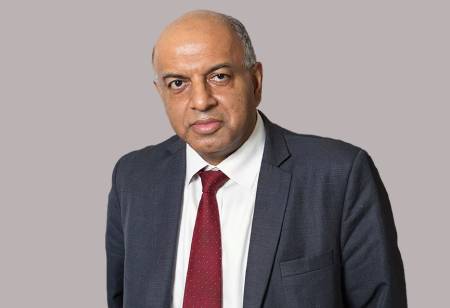A journey of Redefining Entrepreneurship Development in India
 In the AIMA Young Leaders Summit 2024, Sanjeev Bikhchandani, founder and executive vice-chairman of Info Edge, shares his views on leadership thoughts, providing a broader understanding for emerging leaders to think big and stay grounded. He also pointed about ethical leadership, leveraging strategic foresight for corporate success. Following are the key insights:The journey from a conventional, safe upbringing to entrepreneurship showcases the value of exploring different paths until achieving a true vision. Businesses need to survive through bootstrapping, depending on customer payments and less resources. Indian students have shifted entrepreneurship development from a rare career choice to a mainstream aspiration.
In the AIMA Young Leaders Summit 2024, Sanjeev Bikhchandani, founder and executive vice-chairman of Info Edge, shares his views on leadership thoughts, providing a broader understanding for emerging leaders to think big and stay grounded. He also pointed about ethical leadership, leveraging strategic foresight for corporate success. Following are the key insights:The journey from a conventional, safe upbringing to entrepreneurship showcases the value of exploring different paths until achieving a true vision. Businesses need to survive through bootstrapping, depending on customer payments and less resources. Indian students have shifted entrepreneurship development from a rare career choice to a mainstream aspiration.
Journey From Employee to Entrepreneur
Belonging to a typical Delhi, middle-class government officer family, his upbringing was marked by focusing on risk-averse, hard work and getting a good job. The mindset was consciously or subconsciously conditioned for that. However, somewhere along the way, during school, there was a realization that this traditional path might not be the desired one. In the initial phase, the goal remained unclear until the college days gave more clarity. During the 90s, there was no access to the internet. For Seven years, the journey involved drifting and performing small tasks. The activities were done out of seven quarters above the garage and used to teach entrepreneurship development institute on weekends as visiting faculty to get some pocket money. Even journalism was a part of the survival strategy. So, after many years of experimenting with several ventures, Naukri was launched as the 21st idea. At that time, there were only 14,000 Internet accounts in the country. It is vital to drift and explore until something comes up, and once that vision is clear, then go entirely behind it, as happened in this case.
Building a Business with Limited Resources
In contrast with the traditional times, there is a massive shift in the mindset. During the 90s, after leaving the job, there were only limited resources. There was a need to break even to survive and break even on revenue and costs, which means some ideas were pursued and did not pursue others. Essentially, the business was running on customer money. Concerning products, the first was a salary survey wherein the funds must be paid in advance, and a copy will be given. So, customers paid money in advance, and then the firm shipped a copy out. The company started with a capital amount of rs 2000, and there was no access to the computer back then. During that time, reliance was placed on a friend's office at night, using a duplicate key to access and utilize the office computer. Computers were expensive in those days, and the firm was unaffordable to buy them. Hence, there was a need for bootstrapping.
As a venture capitalist
In 2006, the firm went public. Prior to that, in 2005, bankers were hired, and the team worked on the Draft Red Herring Prospectus (DRHP). There was a section in the document titled "Objects of the Issue," explaining the reasons for the IPO. As an individual involved in drafting the prospectus, the section was written with a personal touch, outlining five currencies which is providing an exit for venture capitalist, increasing the value of ESOPs, making the stock a currency, achieving a strategic edge over competitors, and ensuring perpetual access to capital. The banker, however, doubted that SEBI would approve the IPO for these reasons, suggesting a more traditional approach, focusing on standard justifications. Despite this, the team decided to proceed with the original approach.
The firm experienced organic and inorganic growth, along with general corporate purposes, and a few other objectives, though the specifics were not remembered. The IPO tasks were cleared, but the truth was, the company did not actually need the funds, as it was profitable with money already in the bank. In every quarter, the auditors would present to the board, reporting that the IPO tasks were not being used. After three quarters, the board becomes frustrated, questioning why the funds had not been used for the stated reasons. The team then realized the need to comply and decided to invest in startups, seeing the emerging opportunity in the venture capital space. This was in 2007, during a time when there was a shortage of venture capital for startups. The board approved an investment of up to 160 crores for five years, and the company ended up investing over 200 crores in eight or nine startups between 2007 and 2012.
Evolving Perspective on Entrepreneurship development
Lot of things has changed in India and there is a new kind of entrepreneur emerging. After quitting the job in 1990 and being qualified from entrepreneurship development institute like IIT or IIM meant there was a very less chance of becoming an entrepreneur as potential jobs were readily available, making entrepreneurship development challenging. Most interestingly, only few ventured into it before, and there were not sufficient success stories to follow. Besides, there was also a lack of support systems, funding, and the market was much smaller compared to today. Recalling the old IIMA class of 175 students, about 171 graduated. There was a course called Laboratory in Entrepreneurial Motivation and only 10% of the students fascinated in it. If a poll were taken at that time, may be 15 or 20 students would have raised their hands, saying they would want to be entrepreneurs at some point in their careers. In the current scenario, this has changed and in modern IIM classes, 30-40% of students would raise their hands when asked if they want to be entrepreneurs. Entrepreneurship development programme has now become a mainstream career aspiration.
India has always been an entrepreneurial country, but the 200 years of British rule turned it into not just a colony but an economic colony. During this period, it was very difficult to engage in industry as most goods were imported, and the government encouraged that approach. Post-independence, for about 40 to 50 years, the system was characterized by the license raj, where entrepreneurship occurred despite the government's limitations, not because of them. However, there is now a shift in the current era with a better collaboration coming to the grassroots level.
In addition to that, after independence, the government made massive investments in higher education, establishing engineering colleges, business schools, and nurturing the development of private sector institutions. This helped create a large educated middle class, but the conditioning of this middle class leaned toward becoming employees rather than entrepreneurs. After 1991, however, a shift began. Young people from this educated middle class started aspiring to become entrepreneurs. As a result of this, there is a rise in first-generation entrepreneurs who are highly educated individuals but despite having other career choices, opted to pursue entrepreneurship development. Venture capital funding largely supports these entrepreneurs, who are typically first-generation and educated. This marks the emergence of a new sort of entrepreneurs in India, one that has always had entrepreneurial roots but is now fueled by a new mindset.

